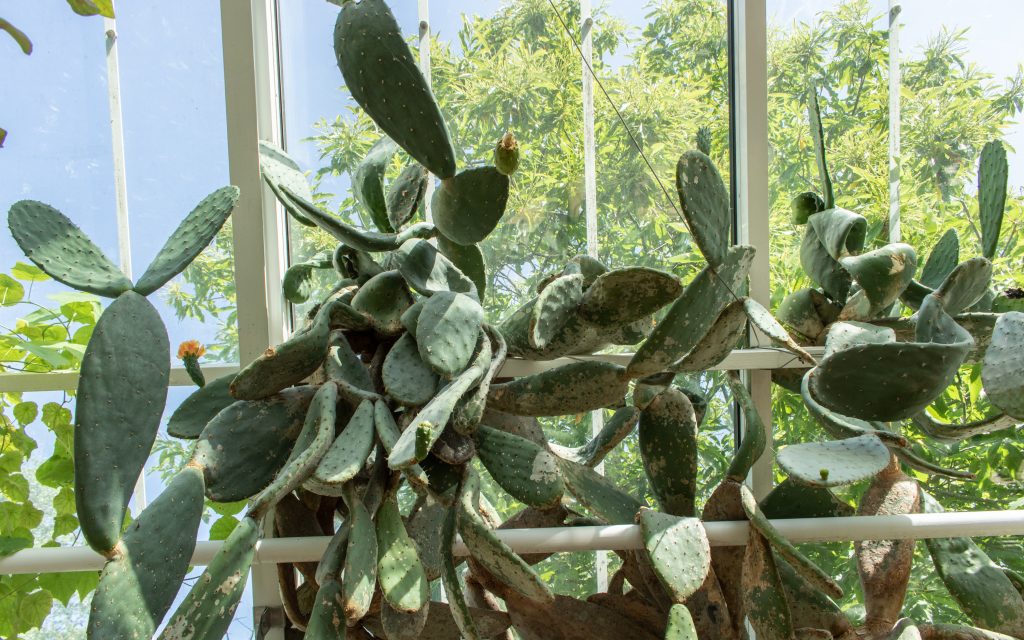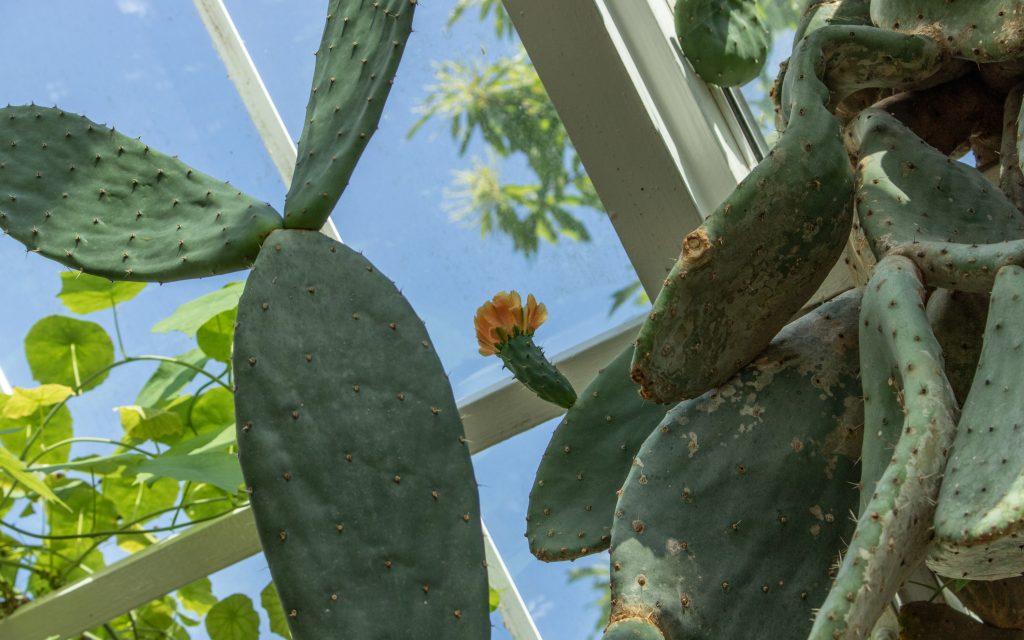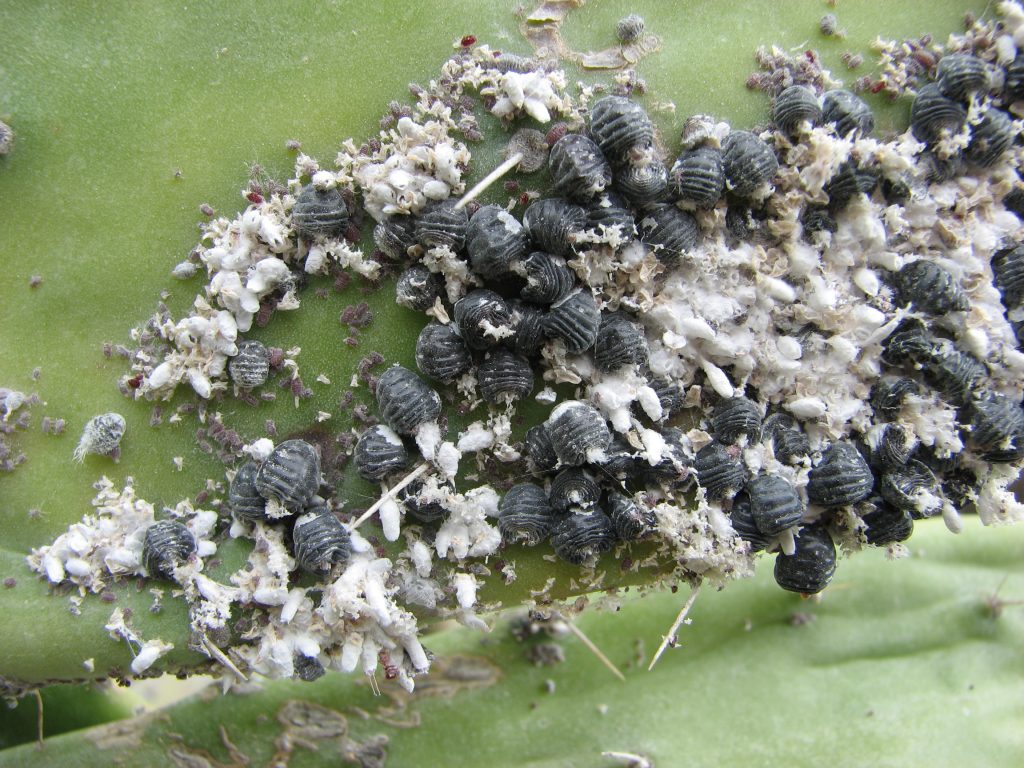Useful lipstick pigment
The yellow sign next to a plant means that it is a globally important useful species. The fruit, which taste like a combination of melon, raspberry and strawberry, are the most commercially valuable part of this plant. The fruit of the prickly pear are also sold in shops in Finland.
Prickly pear has many medicinal uses. It is used to treat diarrhoea, and has anti-inflammatory properties. Its other medicinal properties are currently being studied.
The most interesting use has to do with the dye E120. Perhaps you’ve worn red lipstick, had a Campari cocktail, or eaten red candies? If so, it is likely that you have consumed the red dye E120, which is made by crushing small insects known as cochineal (Dactylopius coccus). These insects are farmed on the branches of the prickly pear for use in dye production.
Native to Mexico and the southern parts of the United States, the prickly pear has unfortunately become an uncontrollable invasive species in many areas. Other plants in the Opuntia family have also become hazardous invasive species. For example, on the Canary Islands and in Australia, opuntias have taken over large areas, replacing native flora.


